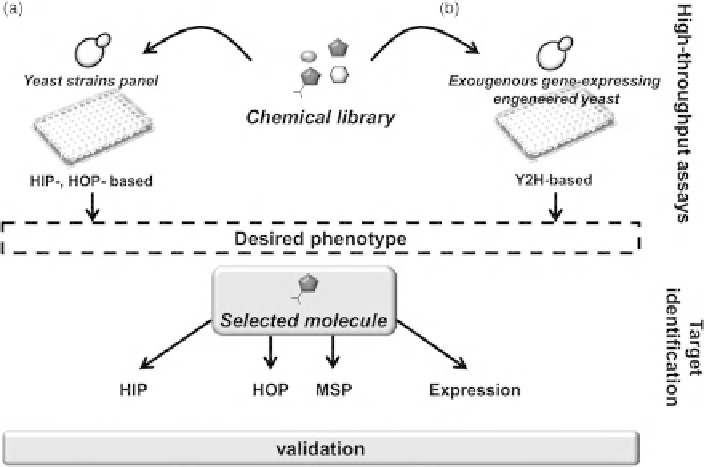Biomedical Engineering Reference
In-Depth Information
[105] and for a dissection of the way of action of novel chemical compounds on
S. cerevisiae
[23,84].
14.4 CONCLUSIONS: THE ROUTE OF DRUG DISCOVERY
WITH THE BUDDING YEAST
The drug discovery process is a complex path consisting of several sequential steps
and requiring both chemical and biological expertise. From the time a decision to
start is made, be it selecting a target to be explored or exploring the biological effects
induced by a novel compound, the process encounters frequent and crucial crossroads.
No matter what the starting decision is, utilization of the proper tool to use in choosing
the direction to take in the steps that follow gains pivotal importance. High-throughput
screenings based on the use of chemical genetic approaches to
S. cerevisiae
do allow
for the selection of chemical compounds able to modulate a phenotype selected from
the yeast model. Parallel treatment with different compounds of yeast strains selected
FIGURE 14.9
Route of drug discovery with
S. cerevisiae cells
. Parallelized cultures of
selected strains of
S. cerevisiae
allow for the selection of chemical compounds able to modify
biological activities. (a) The treatment of selected
S. cerevisiae
deletant strains with a chemical
library allows for the identification of yeast genes whose product is affected by the molecules,
and the selection of biologically active compounds. (b) By expressing exogenous proteins
in
S. cerevisiae
(belonging to a different organism), the effect of a chemical library can be
assessed on a set of targetable entities associated with human diseases. Once a small number of
compounds has been selected by high-throughput assays as inducing a selected phenotype, the
way of action of each molecule can be explored and targets can be identified, then validated.

